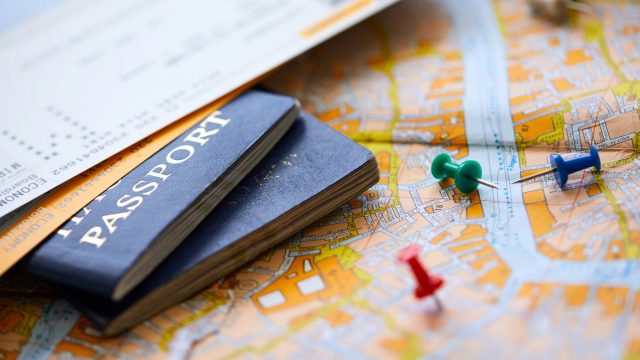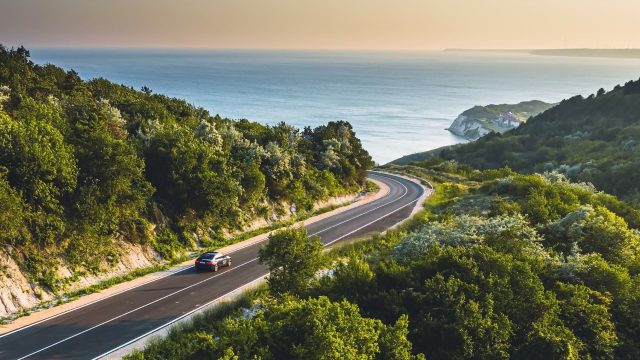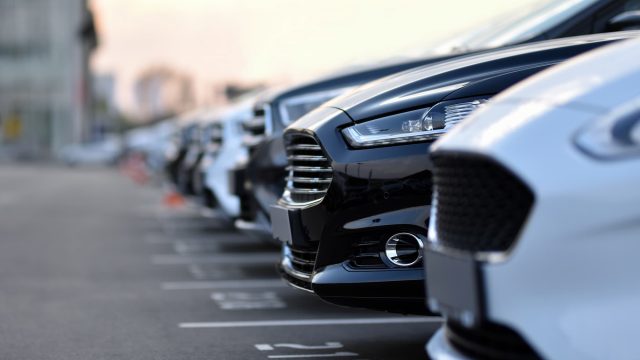Bioluminescent bays are a naturally-occurring phenomenon which can be seen at only a select few locations around the world. The conditions have to be just right for you to take full advantage and bag yourself an unforgettable experience.
 Photo by: Ilya Sviridenko/Adobe Stock
Photo by: Ilya Sviridenko/Adobe Stock
What are bioluminescent bays?
Single-celled bacterial microorganisms that can create the bioluminescent effect are called dinoflagellates (or dinos, for short). There are different kinds of dinos which have different effects. When these dinos, usually algae, are disturbed by movement, their chlorophyll cells release a short, sharp burst of light which lasts less than 1 second in length. It’s thought to be a defensive reaction used to confuse predators. It’s a similar kind of reaction that occurs in fireflies. While this type of algae is common around the world, you would need millions bundled together in a small space to create a dazzling effect. The effect caused by a solo dino can’t be seen by the naked human eye. It is when many of them become trapped in bays and can thrive in the conditions provided by the bay, that the bioluminescence is at its best.
The photos I can see online look amazing!
Be careful though, many of these are fake or have been enhanced by special effects. Due to the process above, the burst of light released lasts for only a short period of time, making it very difficult to capture on camera. For the best results, you would need a tripod and a long-exposure shot to capture as many of the millisecond-long bursts as possible.
When is the best time to visit a bioluminescent bay?
This is a really difficult question to answer as there are a lot of factors that can affect the activity and responsiveness of the dinos. You’ll want to have as little light pollution as possible, so visiting during a crescent or new moon is best. Consider also visiting as late in the night as possible, when it’s darkest, and when most people will have gone home!
Wear a long-sleeved top and trousers to protect against any night-time chills and deter any insects that might want a late-night snack on you. You’ll also want some comfortable shoes that you aren’t worried about getting wet.
Make sure you look up as well as down and take in as much of the atmosphere as you can.
Contact tour guides running trips out to the bay you want to visit for advice, they’ll be the ones who know the area best and can judge the conditions for you before you travel. The intensity of the displays are affected by how concentrated the presence of dinos are. This can increase or decrease due to various factors such as temperature, storms, the season, and tides.
Shop around before booking to get the best experience for your money- some operators will use kayaks, some will use boats. If it’s a boat, will you have to share with other visitors? Some will allow swimming, others won’t. Check the duration of the tour and more importantly, know for sure how much of that time is attributed to travelling to the bay, and how much time is spent in the bay, enjoying the experience. Sometimes tours can be advertised as being 2 hours long, but you actually only get 20 minutes in the bay- which may not be long enough for you!
 Mission Bay in San Diego, California. Photo by: f8grapher/Adobe Stock
Mission Bay in San Diego, California. Photo by: f8grapher/Adobe Stock
Can I swim in the bays?
This really depends on the area. In some areas, this is prohibited as it’s seen as detrimental to the survival of the organisms that cause the stunning effect. Bug sprays, perfumes or other chemicals on your skin can be dangerous to them and make the water less hospitable. If you’re taking a trip out into the bay with a tour operator, ask them about swimming before you book. Definitely do your research before booking, as you’ll want to visit a bay (if possible) where swimming is allowed.
Is it dangerous?
Certain types of dino algae can emit harmful toxins so check before setting out whether it’s safe to go.
Where are the bays?
Bio bays are rare due to the high number of dinos required for the effect to occur. There are three in Puerto Rico which are considered the best; Mosquito Bay, Laguna Grande in Fajardo, and La Parguera.
Mosquito Bay was once named in the Guinness World Book of Records for being the brightest. The surrounding mangrove trees release the vitamin B12 into the water which is vital for the growth and survival of dinos. It’s said that the water here contains up to 160,000 dinos per litre. The bay is small in size so the water isn’t dispersed as easily as it would be in a larger area. The ecology here is considered fragile due to destruction of the nearby mangrove trees which helps sustain the dinos and the impact of tourism. La Parguera is more flexible with swimming.
There are several other locations around the world where it’s possible to experience bioluminescence in the water, however it can be very unpredictable. We list some of our favourites below.
America
Castine Harbour in Maine, is home to Penobscot Bay, a great place to kayak in the bioluminescent waters. You can learn more about the constellations you’re under and the marine life below. Watch the effect your paddles have on the algae living in the water. Tours available through www.castinekayak.com
Mission Bay in San Diego has a ‘red tide’ during the day and green-blue at night due to the presence of a certain type of dino (lingulodinium polyedrum in this case) which bloom every few years. Bear in mind that it’s not a year-round annual occurrence so don’t be disappointed if it’s not happening during your trip. Scientists can’t anticipate when the lights will occur so keep your fingers crossed.
In Florida, Navarre Beach, the phenomenon can be seen from the beach if the conditions are right. Take out a kayak to get up close and personal. Incidentally, the beach was used as a filming location for Jaws 2… we’re sure it’s pretty safe though.
The water around San Juan Island in Washington State, Bellingham Bay, are highly rich in nutrients necessary to sustain a wide range of microorganisms, including dinos (particularly the form noctiluca scintillans, known as ‘sea sparkle’). Depart from Jackson Beach in Friday Harbour and head east along the shoreline following North Bay. The coves here are protected from wind so improves the experience. Book a tour with Discovery Sea Kayak.
Book your car hire for the USA now.
 Red tide in Western Australia. Photo by: philip1652/Adobe Stock
Red tide in Western Australia. Photo by: philip1652/Adobe Stock
Australia
Gippsland Lakes has not always been home to this phenomenon. Following alpine bush fires and floods, algal bloom developed when the conditions of the water changed. Dinos were able to thrive here and now the area is occasionally subject to red tide and the blue-green colour bursts at night. These are definitely safe for swimming in so if you’ve timed your visit with luck, you’ll be able to swim among the glowing microorganisms.
Book your car hire for Australia now.
Belgium
Zeebrugge’s yacht port also gets transformed by “sea sparkle” as the water is nutrient rich and contains high level of the food sources necessary for the organisms to survive.
Book your car hire for Belgium now.
Jersey
It’s possible to arrange a walking tour in Jersey at night-time when there’s a low tide, allowing you to walk along the glowing seabed. Head to the La Rocque Harbour where a type of glow worm resides which light up for up to 20 seconds when disturbed. You’ll definitely need waterproof shoes or boots!
Book your car hire for Jersey now.
Experiencing bioluminescence
Have you ever visited an area where you’ve experienced bioluminescence? Are you planning to visit any of the areas above? Let us know in the comments below!
Written by Jessica Juby.
Make sure you follow us on Twitter and Facebook for the latest travel tips and news. Remember to sign up to our newsletter below for the latest deals.





